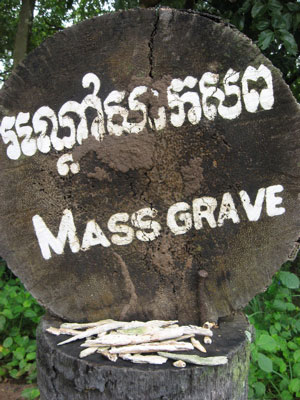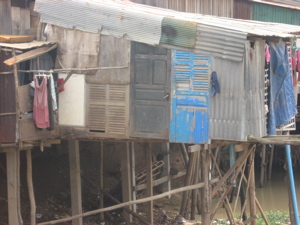Semester at
Sea Fall
2006 Voyage 
TABLE
OF CONTENTS
Coming and Going in Cambodia
By Julia Hursh

It was minutes later that we approached a floating fishing village on the river. I asked who lived in those houses and if they were poor. The guide went on to tell me that the villages were actually Vietnamese. They were not poor; they were actually, by Cambodian standards, considered wealthy. I then noticed a television on inside one of the houses. I asked why they would want to live there and he said that as the Khmer Rouge began to loose power when the Vietnamese came into help Cambodia in 1979, many people migrated over the borders. He said there reason for the migration was to avoid the communist rule that had taken over Vietnam after the end of the war. He said there were about 1 million Vietnamese in Cambodia, many whom do not have visas.
This story made me realize that these Vietnamese were not migrants but refugees. The “Worldwide Refugee Information” packet by the U.S. Committee for Refugees describes a refugee as “a person with a well-founded fear of persecution on account of race, religion, and nationality, membership in a particular social group, or political opinion who is outside the country of his or her nationality and is unable or unwilling to return.” Because these Vietnamese were escaping communist rule in the late 1970’s and were unwilling to go back, they are refugees.

I am very interested in Cambodia’s past so I purchased a book titled “Children of Cambodia’s Killing Fields” compiled by Dith Pran. The book is full of short stories written by children whose lives were affected by the Khmer Rouge. The stories are heart wrenching but I was amazed to find that almost all of the people in the book now live in the United States. I assume they were all asylum seekers and were granted permanent status in the U.S. because they have established lives there.
It is interesting to travel to a country that has both people coming into the country to escape problems of their own country like the Vietnamese, but to have more people trying to escape the problems of their own country such as the Cambodians.
